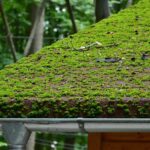Planning a roof drainage system is a crucial step in ensuring the longevity and safety of your home. A well-planned system efficiently directs water away from the roof, preventing potential damage such as leaks and structural decay. In this article, we will explore the essential steps and considerations for designing an effective roof drainage system.

Understanding the Importance of Roof Drainage
A roof drainage system plays a vital role in protecting your home from water damage. Without an effective system, water can accumulate on the roof, leading to leaks, mold growth, and even structural damage. Additionally, proper drainage helps preserve the aesthetic appeal of your house by preventing unsightly water stains and damage to the exterior.
Key Components of a Roof Drainage System
Before diving into the planning process, it’s essential to understand the key components of a roof drainage system. These components include:
Gutters
Gutters are channels that collect rainwater from the roof and direct it towards downspouts. They are typically made from materials such as aluminum, copper, or steel.
Downspouts
Downspouts are vertical pipes that carry water from the gutters to the ground. They help prevent water from pooling around the foundation of your home.
Drains
Drains are installed at strategic points on the roof to capture water and direct it towards the downspouts. They are crucial for flat or low-pitched roofs.
Factors to Consider When Planning a Roof Drainage System
Several factors should be considered when planning a roof drainage system to ensure its effectiveness. These factors include:
Roof Design
The design of your roof, including its slope and shape, will influence the type of drainage system you need. Steeper roofs typically require fewer drains, while flat roofs may need more to ensure proper water flow.
Climate
Consider the climate in your area when planning your drainage system. Areas with heavy rainfall may require larger gutters and additional downspouts to handle the increased water volume.
Material Selection
The materials used in your drainage system should be durable and compatible with your roofing material. For example, metal gutters may not be suitable for homes with wooden roofs.
Steps to Plan a Roof Drainage System
Follow these steps to plan an effective roof drainage system:
Assess Your Roof
Begin by assessing your roof’s current condition and identifying any existing drainage issues. Look for signs of water damage, such as leaks or mold growth.
Determine Drainage Needs
Evaluate the drainage needs of your roof based on its design and the climate in your area. This will help you determine the number and placement of gutters, downspouts, and drains.
Select Suitable Materials
Choose materials that are durable and compatible with your roof. Consider factors such as cost, aesthetics, and maintenance requirements when making your selection.
Design the System
Create a detailed design for your drainage system, including the placement of gutters, downspouts, and drains. Ensure that the system directs water away from your home’s foundation.
Installation
Once you have a plan in place, proceed with the installation. It’s recommended to hire a professional contractor to ensure proper installation and avoid potential issues.
Maintenance and Upkeep
Regular maintenance is essential to keep your roof drainage system functioning optimally. Clean gutters and downspouts regularly to prevent clogs and inspect the system for signs of damage.
Benefits of a Well-Planned Roof Drainage System
A well-planned roof drainage system offers several benefits, including:
- Prevention of water damage to your home
- Reduced risk of mold growth
- Preservation of your home’s aesthetic appeal
- Increased property value
Common Mistakes to Avoid
When planning a roof drainage system, avoid these common mistakes:
- Ignoring the slope of your roof
- Underestimating the volume of water your system needs to handle
- Neglecting regular maintenance
Conclusion
Planning a roof drainage system is a critical step in protecting your home from water damage. By understanding the key components, considering important factors, and following the steps outlined in this article, you can design a system that effectively directs water away from your home. For more detailed information on specific roof drainage solutions, check out these resources on unclogging roof drainage systems and flat roof drainage solutions.

FAQs
1. How often should I clean my roof drainage system?
It’s recommended to clean your roof drainage system at least twice a year, typically in the spring and fall. Regular cleaning helps prevent clogs and ensures the system functions effectively.
2. Can I install a roof drainage system myself?
While it’s possible to install a roof drainage system yourself, it’s recommended to hire a professional contractor for optimal results. Professionals have the expertise to design and install a system that meets your specific needs.
3. What materials are best for gutters?
Common materials for gutters include aluminum, copper, and steel. Aluminum is popular for its affordability and corrosion resistance, while copper offers a unique aesthetic and durability. Choose a material that suits your budget and complements your home’s design.
This article contains affiliate links. We may earn a commission at no extra cost to you.








